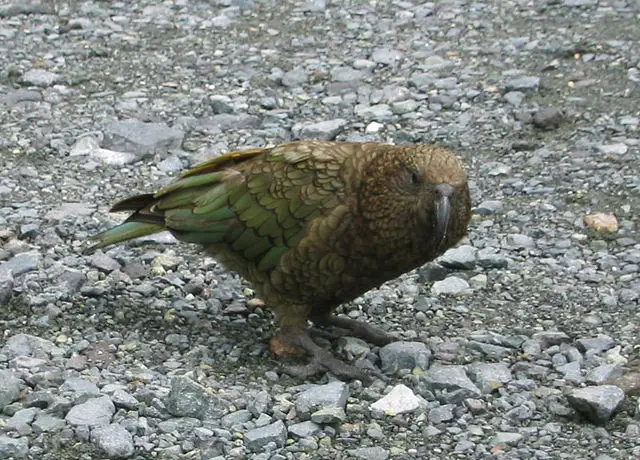New Zealand chose Kākāpō (Strigops habroptilus), the bird of the year 2020. Though, let’s start differently. Did you know that New Zealand has the tradition of picking the bird of the year? Yes, for years now, the people of New Zealand have been voting in such an unusual contest. Every person can give a maximum of five votes to different birds. The one with the highest number of votes becomes the bird of the year. Up to 40,000 people are voting in this contest every year. In 2020, people have chosen kākāpō, which is unprecedented. The bird was already in this position just a few years ago. Hence, we have the two-time winner this year. Let’s see what is so unique and fascinating about this bird that people just can’t stop voting for it. Here are three interesting facts about New Zealand’s bird of the year 2020 we all should know.
Meet the 2020 New Zealand bird winner
Let us first introduce you to the bird of the year properly. Kākāpō, also known as the “mighty moss chicken,” or the owl parrot, is a native bird of New Zealand. Its name from the Māori translates as the night owl. Kākāpō is a large parrot that can reach up to 64 cm, or 25 in, in length, and can weigh about 4 kg or 9 lb. Kākāpō has mainly green and yellow feathers, mixed with back, grey, and some brown. Such coloring allows it to hide in the vegetation. It is also called owl parrot due to the way its feathers fall on its face. It resembles the owl’s face. You can learn more about the habitat and behavior of these birds at myassignmenthelp.com if you’d like. If you wonder, “is myassignmenthelp legit?” be sure it is. Just see it for yourself.

Kākāpō – the bird who can’t fly
Though the bird’s parameters are not so unusual for a parrot, there’s something completely unique to kākāpō’s characteristics. It can’t fly, hence, the nickname, chicken. Kākāpō is the largest living parrot, to be fair. Its flying relatives usually weigh just a little less (400g or 14oz) than moss chicken. You can check which parrots those are with the writers from essayshark. Another interesting fact, kākāpō is actually a rare bird that can suffer from being overweight.
However, it’s not all about the weight. This parrot doesn’t have wings long enough to support itself, and it doesn’t have a keel. It is the part of any bird’s anatomy that is responsible for a wing’s strength. Thus, kākāpō uses its wings only for balance. On the other hand, kākāpō is great at climbing. It can reach impressive heights by climbing trees and then parachute its way down if needed.
Kākāpō is an endangered species
Even the people’s favorite birds are not safe when it comes to extinction. It turns out, kākāpō is an endangered species. Though, on the bright side, their numbers have shown steady growth over the recent few decades. Thus, there were only about 50 birds of its kind in the 1990s, but currently, there are slightly over 200 kākāpōs in New Zealand, their home country.
In the past, the bird used to inhabit the entire country. It used to live freely since there were no predators to challenge its lifestyle. They were prey only to specific types of owls. However, during the day, they were completely free of worries. Since the human arrival to Aotearoa, though, things have changed. Humans have brought in many non-native predators, and kākāpō’s existence changed completely. Now they live only on the islands that are still free of predators. It can’t survive in most parts of the country without protection. Kākāpō’s existence was secured only due to the enormous conservation efforts.
Kākāpō is a slow breeder
Kākāpō takes a long time to breed a new generation. First, they are the only parrot on the planet to have the lek breeding system. In general, this system reminds the hunger games but just for males, and with a much, much lower number of fatal cases. Females choose their mates based on the males’ performance in the “arena.” You can learn who else has the led breeding system by asking paperhelp academic writers. The whole process of mating can take up to four months.
Unfortunately, since kākāpō is not flying, it makes it very hard to avoid predators at the arena. Their best way to protect themselves is to pretend to be a shrub. However, in an open space that is chosen for the breeding season, such tactics don’t guarantee any success. Also, owl parrots suffer from low fertility. Usually, about half of the eggs produced in the breeding season are infertile. What’s more, breeding seasons usually happen every five years. The event’s rarity doesn’t help the conservation efforts to stimulate the growth in these species numbers.






Leave a Reply